

Choosing the right camera for your construction site may seem a daunting task. The options are very broad and the form factors differ dramatically. Understanding the options you have on hand will give you the proper tools to make an educated choice, because construction cameras are now an essential tool themselves on a jobsite. In this article, we will take a look at the different types of construction cameras and categorize them by function and by usage.
A construction camera is quite simply a camera which automatically records images and videos on a job site. Some may consider only a network enabled camera which allows remote viewing to fit this category, yet short-term cameras with no remote viewing may serve a very specific purpose for a certain set of tasks, so they will be included in our article. We will also talk about the different elements and parts of a construction camera, in software and hardware, and what to know when choosing one.
Hardware:
To be able to survive the elements and the hard conditions, construction cameras have to be:
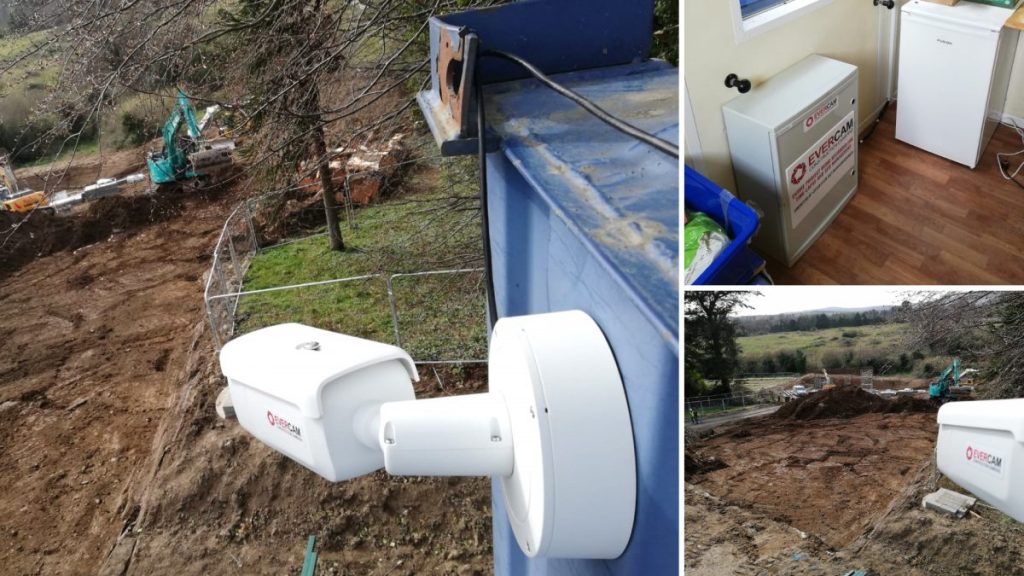
Software:
What mainly differentiates construction cameras from standard CCTV cameras is the software infrastructure that supports the camera hardware, such as:
What are the types of Construction Cameras?
We will begin with the types by function:
Fixed position cameras:
Fixed position cameras are set up in an immobile position, usually in a high-vantage point to have a good view of the jobsite as a whole for general construction site management or for the purpose of creating promotional timelapse videos. For time-lapse cameras, there are two categories within it:
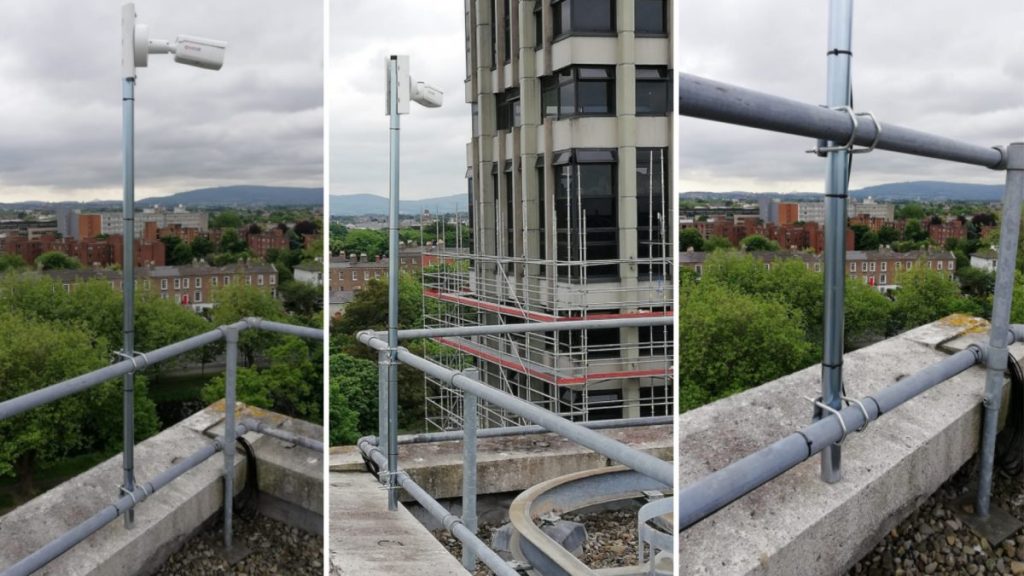
Pan-Tilt-Zoom Cameras (PTZ Cameras):
PTZ cameras are a classic type of motorized CCTV cameras, installed in a fixed location with the ability to pan, tilt and zoom the view from a remote location. The form factor could range from the standard bullet style, to the more subdued bubble form factor.
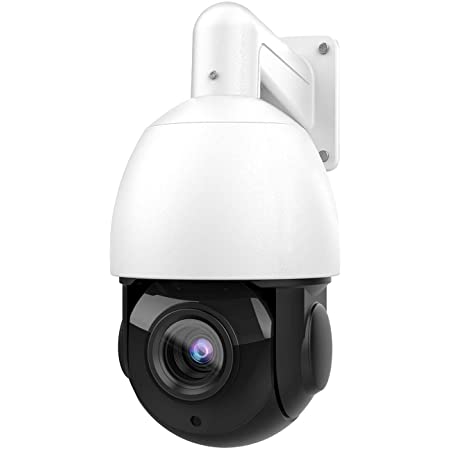
Mobile Camera Trailers:
Mobile Camera Trailers are built as an autonomous, portable surveillance solution, most useful for hard-to-maneuver construction sites, requiring a mobile, wheeled trailer, which often has its own onboard power supply, usually solar panels.
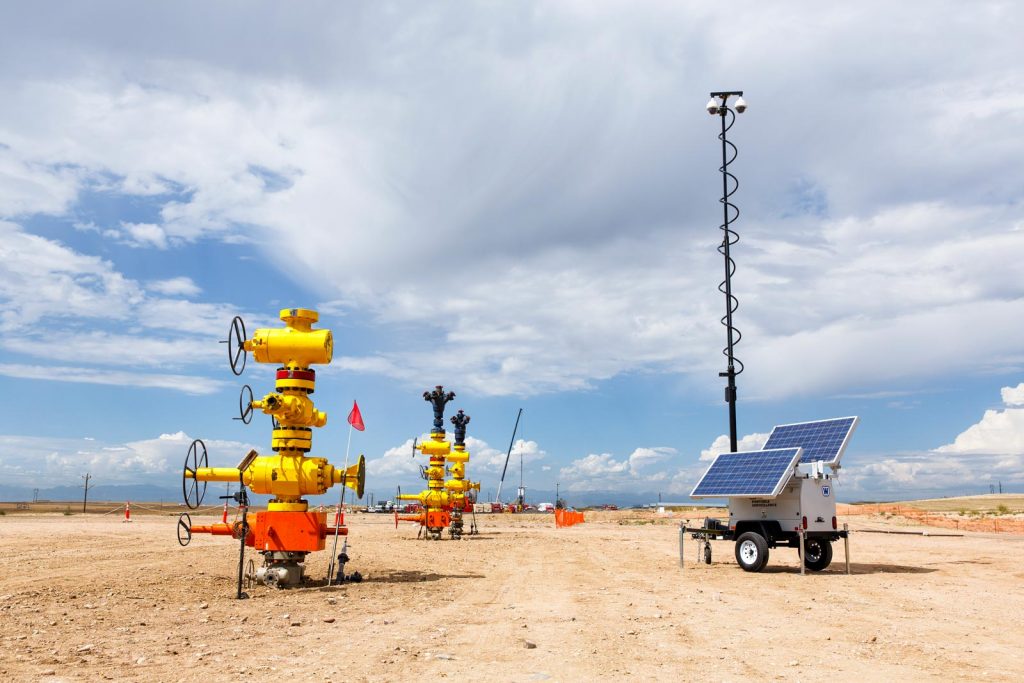
360 Cameras (Walkaround):
360 Cameras are a relatively new entry into the construction camera world, which allow full, 360 degree views all around the camera, even on saved footage. Their forte on a jobsite is the ability to give the viewer of the footage an on-the-ground tour of the jobsite, as it is at the moment of filming, and the footage allowing the viewer to see in every direction.
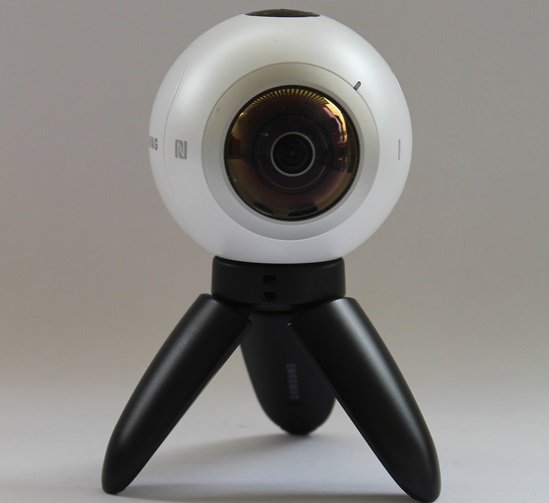
Drone Cameras:
Civilian drone usage spiked dramatically in the mid-2010s, with more affordable consumer models becoming widespread beyond their specialized military past.
Drones on a construction site have a unique, on-demand function to show the site from an angle impossible to achieve with the other types of cameras, giving a mobile birdseye view of the site, but only in short bursts due to the limited battery power, and requiring a human operator for each use.
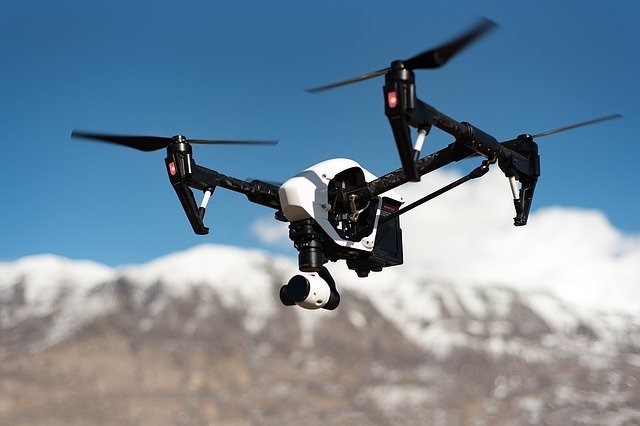
Mobile Phone Cameras (Cell phone Cameras):
Photographer Chase Jarvis famously said “The best camera is the one that you have with you”, and with the overwhelming adoption of smartphones in our modern era, every construction worker now has an HD or even 4K camera in their pocket, deployable at a moment’s notice. Mobile phone cameras are most useful for small issues that require instant, close up recording outside of the recording area of the main cameras on the jobsite.
Types of Construction Cameras by Usage on a Jobsite
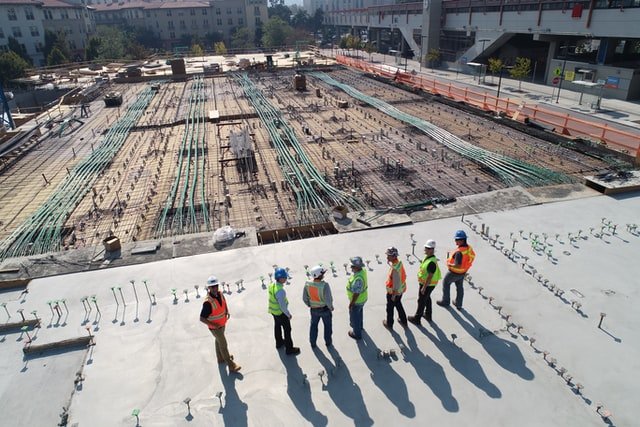
Quantity Surveyor Camera (QS):
A QS camera is one that has a direct view of the gate and the lot where heavy machinery either comes in and out, and where they load, unload and park. The main function is to keep track of resources, with visual evidence for the duration of the project.
Excavation Camera:
An Excavation Camera has a general view of the early stages of the construction process, monitoring the excavation stage and keeping tabs on the resources used during that process.
Tower Crane Cameras:
Tower Crane cameras are attached to one or multiple cranes on the jobsite, monitoring the site from a high vantage point, either for specific tasks or for general monitoring of the jobsite.
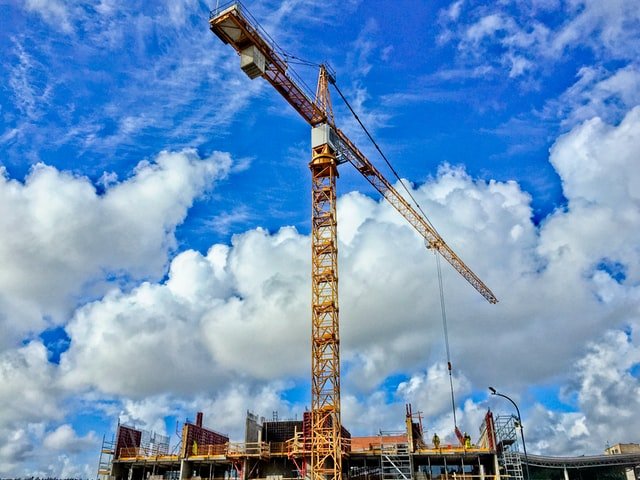
Muckaway Camera:
A Muckaway camera has a direct view of the trucks hired to clear and process the soil removed during the excavation process, depending on local laws. Evercam’s Gate Report keeps a clear ledger of how many and which heavy machines came in and out, whether it’s a tip truck or a cement mixer, Evercam’s AI will recognize the vehicle and tell you exactly how long it was on-site, and exactly when it came in and went out.
Why Evercam?
Evercam takes the existing tasks and makes them all faster, simpler and cleaner, so the construction crew can work smarter, not harder. Time wasted fiddling with clipboards, surveillance trailer keys and memory cards will now be freed to do more with the footage you capture. In this table, we compare the applications a construction camera may have, and how it differs from basic CCTV to using Evercam.
| Application | Basic CCTV | With Evercam |
|---|---|---|
| Time-Lapse | Requires professional video editors and high-resolution recording and long-term storage of the recordings | On-demand time-lapse, professionally crafted by Evercam’s team of video editors in stunning 4K video |
| Storage | Requires dedicated storage solutions, with initial costs and long-term maintenance costs covered by the client | Local and cloud storage provided by Evercam to keep all footage safe and secure from hardware and software failure |
| Footage viewing | Requires direct access to physical monitors and storage | Full access to all footage through a secure online portal on a PC, tablet or mobile of choice |
| Number of users | One user at a time | Unlimited |
| Cost and Muckaway Reporting | Requires manual reporting by staff member | AI generated reports |
| Camera position | Within the construction site, low angle | High vantage point installation, including positions such as a neighboring building and crane |
| Software | Ad-hoc, depending on the user | Easy to use Evercam software, with all features accessible, and all information available at a glance |
Conclusion
Construction cameras are neither uniform nor do they function the same. Each camera type has its own use on a construction site, and now you now have the knowledge to choose the right tool for the right job, with some options being specialized, while others being more flexible and usable for different tasks at different times. Evercam removes the need to waste time on the aforementioned tasks and frees construction crews all around the world to do their work better, smarter and more efficiently.
For more information about our project management cameras, you can contact us at Evercam construction cameras